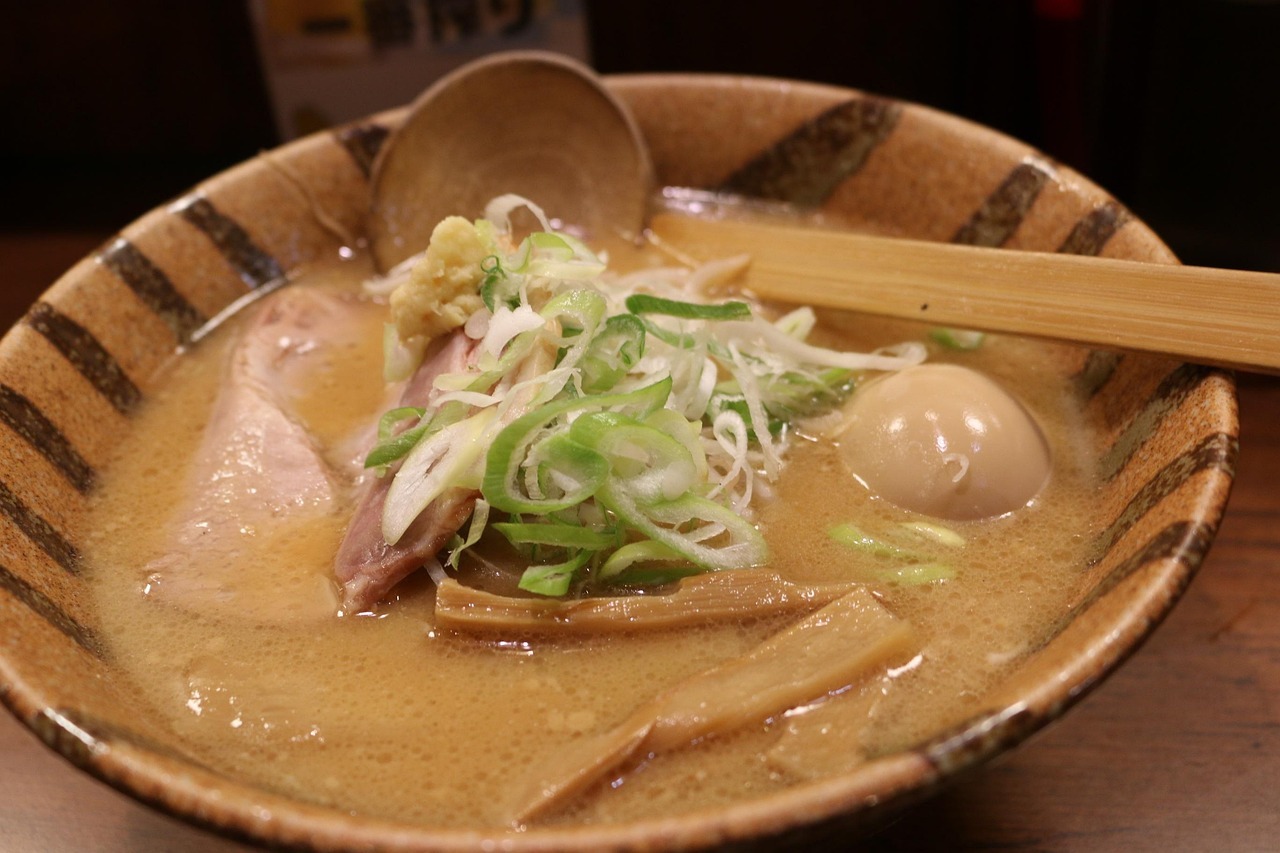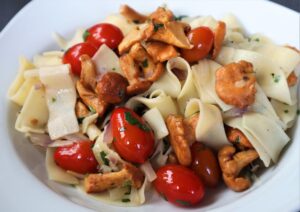Picture this: you’re staring at a package of ordinary instant noodles, but instead of settling for the same old boring meal, you’re about to create something extraordinary. This isn’t just another quick dinner fix – it’s a complete transformation that turns basic ramen into a rich, satisfying dish that could easily cost $15 at a trendy noodle shop.
Why This Recipe Changes Everything
Gone are the days when instant noodles meant compromise. This flavor-packed makeover technique has revolutionized how we think about quick cooking. By building layers of taste through strategic ingredient combinations, we create depth that rivals traditional slow-cooked broths. The magic happens when simple pantry staples work together to create something far greater than the sum of their parts.
Essential Ingredients for Your Noodle Transformation
The Foundation Elements
- 3 blocks of instant ramen (ditch those sodium-packed seasoning pouches)
- 2 tablespoons cooking oil with high smoke point
- 4 garlic cloves, finely chopped
- 1-inch piece fresh ginger, minced
- 3 scallions, divided into white and green portions
The Game-Changing Sauce Blend
- 3 tablespoons quality soy sauce
- 2 tablespoons oyster sauce (or mushroom sauce for vegetarians)
- 1 tablespoon rice wine vinegar
- 1 tablespoon packed brown sugar
- 1-2 teaspoons chili paste or hot sauce (customize to taste)
- 1 teaspoon toasted sesame oil
Upgrade Your Bowl (Optional but Recommended)
- Jammy eggs (6-minute boiled)
- Fresh or sautéed mushrooms
- Crunchy bean sprouts
- Fresh herbs like cilantro or Thai basil
- Toasted sesame seeds
- Your favorite protein: leftover rotisserie chicken, pan-seared tofu, or quick-cooked shrimp
Time Investment
- Prep work: 8 minutes
- Active cooking: 12 minutes
- Total commitment: 20 minutes
This streamlined approach cuts traditional ramen cooking time in half while delivering restaurant-quality results.
The Step-by-Step Transformation Process
Phase 1: Smart Preparation
Organization is your secret weapon here. Before any heat touches the pan, have everything chopped, measured, and within arm’s reach. Whisk your sauce ingredients together in a small bowl – this prevents any last-minute scrambling and ensures even flavor distribution.
Phase 2: Perfect Noodle Texture
Bring water to a rolling boil and add your noodles. Here’s the crucial part: cook them for exactly 1 minute less than the package suggests. They should have a slight bite since they’ll continue cooking in the sauce. Drain immediately and give them a quick cold water rinse to halt the cooking process.
Phase 3: Building the Flavor Base
Heat your oil in a large pan or wok over medium-high heat. Add the chopped garlic, ginger, and white parts of the scallions. Stir continuously for about 45 seconds until the kitchen fills with amazing aromas, but don’t let anything brown or you’ll introduce bitter notes.
Phase 4: Protein Integration (If Using)
Now’s the time to add any proteins that need cooking. Quick-searing thin slices of meat or tofu takes just 2-3 minutes. For pre-cooked ingredients like rotisserie chicken, you’ll add them later just to warm through.
Phase 5: The Magic Moment
Add your drained noodles to the aromatic oil and immediately pour in your prepared sauce. Using tongs or chopsticks, toss everything together energetically for 1-2 minutes. Watch as the sauce coats every strand and begins to glaze the noodles beautifully.
Phase 6: Final Flourishes
Remove from heat and scatter your chosen toppings over the noodles. The residual heat will gently warm soft additions like herbs, while crunchy elements provide textural contrast.
Nutritional Breakdown (Per Serving)
Based on the basic recipe serving 2-3 people
- Energy: 295 calories
- Carbohydrates: 44g
- Protein: 8g
- Fat: 9g
- Sodium: 820mg
- Fiber: 3g
Healthier Swaps That Don’t Sacrifice Flavor
Want to boost the nutritional profile without losing the indulgent taste? Try these strategic substitutions:
Noodle Upgrades: Swap half the ramen for spiralized vegetables like zucchini or carrot ribbons. You’ll slash calories while adding vitamins and fiber.
Sodium Solutions: Use low-sodium soy sauce or try coconut aminos for a slightly sweet, umami-rich alternative that cuts sodium by nearly half.
Vegetable Powerhouse: Stir in a handful of baby spinach or thinly sliced cabbage during the last minute of cooking. They’ll wilt perfectly and add crucial nutrients.
Protein Boost: Edamame beans or cubed firm tofu provide plant-based protein and make the dish more filling.
Sugar Alternatives: Replace brown sugar with a small amount of pure maple syrup or stevia-based sweetener to reduce empty calories.
Creative Serving Ideas
Asian Fusion Bowl: Serve over a bed of fresh greens with sliced avocado and a sprinkle of furikake seasoning.
Family Feast: Present in a large serving bowl with small individual bowls and let everyone customize their portions.
Elevated Presentation: Garnish with microgreens and serve in wide, shallow bowls for an Instagram-worthy meal.
Comfort Food Style: Top with a fried egg and serve alongside pickled vegetables for a satisfying dinner.
Pro Tips to Avoid Common Pitfalls
Texture Troubles: The biggest mistake is overcooking the noodles. They should retain some firmness since they’ll soften slightly in the sauce.
Flavor Balance: Taste your sauce before adding it to the noodles. Everyone’s palate is different, so adjust the sweet, salty, and spicy elements to your preference.
Temperature Matters: Don’t add cold noodles to hot sauce – they won’t absorb flavors properly. If your noodles have cooled, give them a quick rinse with warm water.
Less is More: Resist the urge to add every topping you own. Three to four complementary additions work better than a crowded bowl.
Storage and Meal Prep Strategies
Short-term Storage: Refrigerate leftovers for up to 3 days in airtight containers. The flavors actually intensify overnight.
Reheating Success: Add a splash of water when reheating to loosen the sauce. Microwave in 30-second intervals, stirring between each.
Make-Ahead Options: Prepare your sauce up to a week in advance and store it in the refrigerator. Cook noodles fresh for best results.
Freezing Reality: While technically possible, frozen ramen loses its appealing texture. Stick to refrigeration for optimal quality.
Frequently Asked Questions
Can I make this dairy-free? The base recipe is naturally dairy-free, but double-check your sauce ingredients if you have severe allergies.
What if I don’t have oyster sauce? Hoisin sauce works as a substitute, though it’s sweeter. You can also use additional soy sauce with a pinch of sugar.
How do I make it less salty? Use low-sodium versions of your sauces and taste before adding the full amount. You can always add more, but you can’t take it back.
Can I double the recipe? Absolutely! Just use a larger pan to ensure even cooking and sauce distribution.
What’s the best way to soft-boil eggs for topping? Bring water to a boil, gently add eggs, cook for exactly 6 minutes, then immediately transfer to ice water. Perfect jammy centers every time.
The Bottom Line
This isn’t just a recipe – it’s a technique that transforms humble ingredients into something special. Once you master this method, you’ll find yourself experimenting with different sauce combinations and toppings, creating your own signature versions. The beauty lies in its adaptability: whether you’re cooking for one or feeding a family, craving comfort food or something with a kick, this approach delivers every time.
Ready to revolutionize your relationship with instant noodles? Gather your ingredients and prepare to be amazed by what you can create in just 20 minutes.







